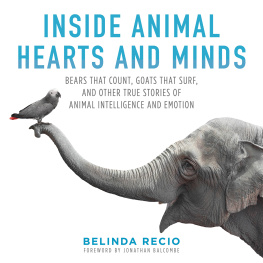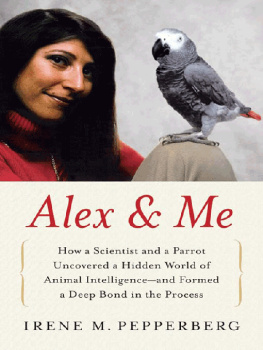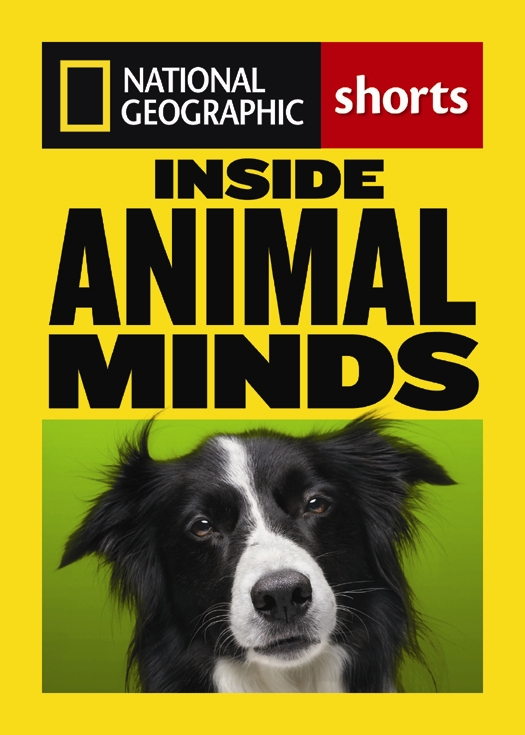Published by the National Geographic Society
1145 17th Street N.W., Washington, D.C. 20036
Copyright 2012 National Geographic Society. All rights reserved. Reproduction of the whole or any part of the contents without written permission from the publisher is prohibited.
eISBN: 978-1-4262-1003-7

The National Geographic Society is one of the worlds largest nonprofit scientific and educational organizations. Founded in 1888 to increase and diffuse geographic knowledge, the Societys mission is to inspire people to care about the planet. It reaches more than 400 million people worldwide each month through its official journal, National Geographic, and other magazines; National Geographic Channel; television documentaries; music; radio; films; books; DVDs; maps; exhibitions; live events; school publishing programs; interactive media; and merchandise. National Geographic has funded more than 10,000 scientific research, conservation, and exploration projects and supports an education program promoting geographic literacy.
For more information, visit www.nationalgeographic.com
National Geographic Society
1145 17th Street N.W.
Washington, D.C. 20036-4688 U.S.A.
For rights or permissions inquiries, please contact National Geographic Books Subsidiary Rights:
Cover: Border collie
(Vincent J. Musi; cover design by Jonathan Halling)
v3.1
C ONTENTS
T hree National Geographic magazine articles on animal intelligence, compiled in one easy ebook format, to read and reread:
In Minds of Their Own, Virginia Morell provides a fascinating overview of the science of animal intelligence. She introduces us to an African gray parrot named Alex, a bonobo named Kanzi, and a border collie named Betsy. Each of these animals tells us something interesting about the way they perceive and manipulate their world. The article also explores what scientists are learning about the intelligence of dolphins and crows, beyond mere communication.
In Almost Human, Mary Roach takes us to the savannas of Senegal to meet a group of 34 chimpanzees, whose behavior and social structures have given scientists some important clues to understanding their communication and intelligence as well as our own evolution.
In The Genius of Swarms, Peter Miller looks at the collective behavior of ants, bees, and other insects for what they can tell us about social organization and how sometimes intelligence lies outside of the individual brain. This article served as the basis for his book The Smart Swarm: How Understanding Flocks, Schools, and Colonies Can Make Us Better at Communicating, Decision Making, and Getting Things Done.
Minds of Their Own
By Virginia Morell
Animals are smarter than you think.
I n 1977, Irene Pepperberg, a recent graduate of Harvard University, did something very bold. At a time when animals still were considered automatons, she set out to find what was on another creatures mind by talking to it. She brought a one-year-old African gray parrot she named Alex into her lab to teach him to reproduce the sounds of the English language. I thought if he learned to communicate, I could ask him questions about how he sees the world.
When Pepperberg began her dialogue with Alex, who died September 2007 at the age of 31, many scientists believed animals were incapable of any thought. They were simply machines, robots programmed to react to stimuli but lacking the ability to think or feel. Any pet owner would disagree. We see the love in our dogs eyes and know that, of course, Spot has thoughts and emotions. But such claims remain highly controversial. Gut instinct is not science, and it is all too easy to project human thoughts and feelings onto another creature. How, then, does a scientist prove that an animal is capable of thinkingthat it is able to acquire information about the world and act on it?
Thats why I started my studies with Alex, Pepperberg said. They were seatedshe at her desk, he on top of his cagein her lab, a windowless room about the size of a boxcar, at Brandeis University. Newspapers lined the floor; baskets of bright toys were stacked on the shelves. They were clearly a teamand because of their work, the notion that animals can think is no longer so fanciful.
Certain skills are considered key signs of higher mental abilities: good memory, a grasp of grammar and symbols, self-awareness, understanding others motives, imitating others, and being creative. Bit by bit, in ingenious experiments, researchers have documented these talents in other species, gradually chipping away at what we thought made human beings distinctive while offering a glimpse of where our own abilities came from. Scrub jays know that other jays are thieves and that stashed food can spoil; sheep can recognize faces; chimpanzees use a variety of tools to probe termite mounds and even use weapons to hunt small mammals; dolphins can imitate human postures; the archerfish, which stuns insects with a sudden blast of water, can learn how to aim its squirt simply by watching an experienced fish perform the task. And Alex the parrot turned out to be a surprisingly good talker.
Thirty years after the studies with Alex began, Pepperberg and a changing collection of assistants were still giving him English lessons. The humans, along with two younger parrots, also served as Alexs flock, providing the social input all parrots crave. Like any flock, this oneas small as it washad its share of drama. Alex dominated his fellow parrots, acted huffy at times around Pepperberg, tolerated the other female humans, and fell to pieces over a male assistant who dropped by for a visit. (If you were a man, Pepperberg said, after noting Alexs aloofness toward me, hed be on your shoulder in a second, barfing cashews in your ear.)
Pepperberg bought Alex in a Chicago pet store. She let the stores assistant pick him out because she didnt want other scientists saying later that shed deliberately chosen an especially smart bird for her work. Given that Alexs brain was the size of a shelled walnut, most researchers thought Pepperbergs interspecies communication study would be futile.
Some people actually called me crazy for trying this, she said. Scientists thought that chimpanzees were better subjects, although, of course, chimps cant speak.
Chimpanzees, bonobos, and gorillas have been taught to use sign language and symbols to communicate with us, often with impressive results. The bonobo Kanzi, for instance, carries his symbol-communication board with him so he can talk to his human researchers, and he has invented combinations of symbols to express his thoughts. Nevertheless, this is not the same thing as having an animal look up at you, open his mouth, and speak.
Pepperberg walked to the back of the room, where Alex sat on top of his cage preening his pearl gray feathers. He stopped at her approach and opened his beak.
Want grape, Alex said.
He hasnt had his breakfast yet, Pepperberg explained, so hes a little put out.
Alex returned to preening, while an assistant prepared a bowl of grapes, green beans, apple and banana slices, and corn on the cob.
Under Pepperbergs patient tutelage, Alex learned how to use his vocal tract to imitate almost one hundred English words, including the sounds for all of these foods, although he calls an apple a ban-erry.









